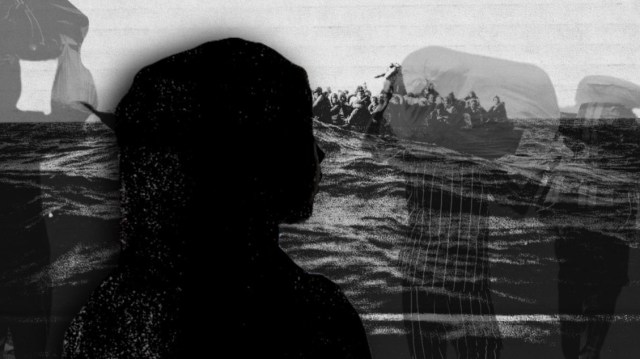
These tragedies in Trinidad, Chile and the U.S. sadden us, but should also motivate us to continue demanding safe, orderly and regular pathways for Venezuelan migrants.
By Caracas Chronicles – Betilde Muñoz-Pogossian
Feb 11, 2022
On February 5th, 2022, an awful tragedy happened. A Venezuelan baby was killed in his mother’s arms when the Trinidad and Tobago Coast Guard fired at the boat carrying a group of Venezuelan migrants.
We know that at least three Venezuelan kids have died migrating to another country so far this year.
In mid-January, a Venezuelan mom with her young daughter Victoria tried to irregularly cross the U.S.-México border. Probably with the hope of giving her daughter a better future in the U.S., the mom started the journey from the Mexican town of Acuña with a group of migrants and their coyotes (or intermediaries who move migrants through borders and “speed up” paperwork or legal obstacles). However, their future tragically changed when they decided to cross the Rio Grande and the girl fell into a hole and drowned. The better option, without a doubt, was crossing regularly. However, with no legal pathways to do it, they had no choice but to risk their lives. And this could have been the story of over 100,000 Venezuelans and their kids who irregularly crossed the U.S.-México border in 2021.
Keiler Eduardo was another Venezuelan migrant child who had a tragic end. He died on the bus heading to Chile with his mother and four-month-old brother from Venezuela. He had already crossed 3,000 kilometers through the winding Andean roads of Venezuela, Colombia, Ecuador and Peru, and still had another 2,400 kilometers of Bolivian and Chilean highways to reach his new home when he was found dead. They ruled he had died of “natural causes” but surely the reduction in atmospheric pressure and lower oxygen levels at such altitudes, unfamiliar to Venezuelans, may have been the cause.
The most recent one was that of the young baby who died when the Trinidad and Tobago Coast Guard fired at a boat carrying a group of Venezuelan migrants. We understand that each sovereign country has the right to enforce regular migration on its borders. But there’s a higher principle and aspiration that should inform those border control responses: the protection of those migrants and refugees’ human rights. Fortunately, it’s been announced that an investigation is already underway to understand what happened, and what can be done better. But in the meantime, let’s not forget that child, and that family. Let that tragedy serve, at least, to have a different conversation about how to ensure those pathways for entry and permanence by Venezuelans in receiving countries become more consistent with international human rights law and humanitarian considerations. Especially because Venezuelans often migrate because they have no choice.
So rivers, altitude, sea, jungles, and bullets keep putting Venezuelan migrant children’s lives at risk.
And by the way, there may be many other Venezuelan migrant kids we don’t hear about: others who have died anonymously, those who have fallen at the hands of human trafficking networks, those who are sexually exploited (as well as their moms) throughout their journey…
We have a responsibility to do all we can to prevent more deaths and to raise the bar in terms of how governments in the region are responding to the influx of Venezuelan migrants and refugees to their countries. No one denies their right to sovereignly ensure an orderly migration but no one can refuse their responsibility to protect the rights of this population. Both are legitimate claims, but I think we can do better at reconciling both.
…
Read More: Caracas Chronicles – The tragic tales of three Venezuelan migrant children
…

